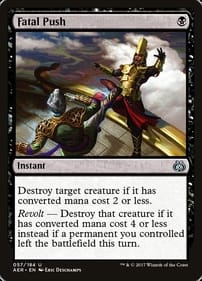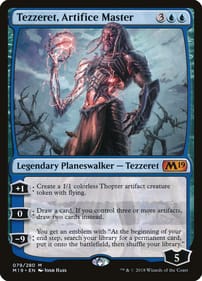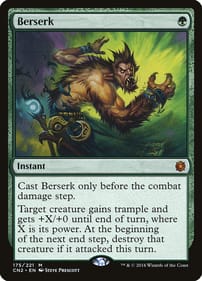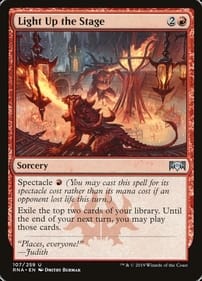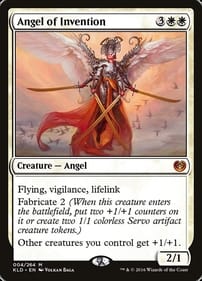Full-length Murgatroyd & Nepenthe Graphic Novel is Perfect Summer Reading
By Dan BrownSummer is here and so is D.S. Barrick’s full-length Murgatroyd & Nepenthe graphic novel.Now is the perfect time to savour this dreamlike tale of two outsiders travelling through a series of psychedelic landscapes, musing about the nature of life as they go. As I’ve said elsewhere, this book is utterly original – I’ve never read anything else like it, which is a good thing.It’s hard for me to describe the pair’s first book-length adventure. It is poetic, wistful, fun, and challenging in all the right ways. If you don’t know the name D.S. Barrick, odds are you’ve already seen his work. He is the Forest City cartoonist who created the lively mural on the exterior of L.A. Mood’s new location at 100 Kellogg Lane. His characters likewise grace the store’s bags and T-shirts.He is also the illustrator writer behind the venerated local character Skulsi Thatcher and has collaborated with writer Scott MacDougall on the Lucky Unlucky series. Barrick is on record as saying what he wanted to do with Murgatroyd & Nepenthe, first published as four separate comics, was to create a story that has no beginning or end – he wanted it to be “all middle.” What this means in practical terms is the focus rests on the two central characters and how they interact. It also makes it impossible for me to “spoil” the story.At the same time, you’ll have a hard time ignoring the different locales the oddball pair move through.There are pyramids, ships that travel on air as easily as water, Christmas trees, rugged cavescapes, and sparkling vistas of stars with flying saucers that put me in the mind of how Jack Kirby pushed the comic form in new directions back in the day.Another way of saying it: This is the most colourful black-and-white book I’ve come across.There are also girl vampires, street urchins and robots (a D.S. Barrick specialty). As part of the bonus materials, the London artist has even included renderings of his characters done by his young daughter in the back of the new volume.The reason I think this is the best time to read Murgatoryd & Nepenthe is because in the lazy summer, the overtaxed brain needs a break from the usual routine.So if you want a thought-provoking and moving diversion from the stuff being done by the big publishers, check out D.S. Barrick’s latest. It will blow your mind, but in a good way.How Barrick will top himself, I don’t know, but I hear through the grapevine the next projected book in the series has an intriguing premise: Murgatroyd & Nepenthe in space!Dan Brown has covered pop culture for 30 years as a journalist and also moderates L.A. Mood’s monthly graphic-novel group.
Upcoming Omnibus Volumes Feature Comics from Marvel’s Michael Golden Age
By Dan Brown There’s a whole lotta classic Michael Golden art coming down the pipeline. I invite young comic fans who missed out on Golden’s most-celebrated work in the 1980s to check out two omnibus editions set to debut early next year. They feature reprinted issues from two series that kicked off in 1979 – ROM: Spaceknight and The Micronauts – then ran into the mid-1980s. If you want to understand why fiftysomething dudes like me always seem to be bellyaching about how comics reached perfection when we were kids, these books are Exhibit A. In my memory, Golden’s pencils leapt off the page with undeniable power and expressiveness. He could take obscure Marvel comic characters and make them memorable. He could make alien landscapes seem truly otherworldly, as few pencillers – think George Perez and Jack Kirby – did. Golden was never the interior artist on ROM, but he did contribute a series of amazing front covers in the title’s early going. A toy tie-in with Hasbro, ROM followed the exploits of a galactic do-gooder who comes to Earth to dispatch the evil Dire Wraiths. Having those shape-shifters as foes imbued the series with a vibe straight out of Invasion of the Body Snatchers. Of course, the ironic part is how another race of Marvel shape-shifters, the Skrulls, had already been trying to take over the planet, so the Wraiths were kind of redundant. I especially love the cover of issue 11, which shows the silver spaceknight ripping the wing from an F-16 in mid-air as a squad of the planes swarms him. Golden’s art had started to make an impression on me earlier in 1979 with the Micronauts. I was 11 years old. He illustrated the first 12 issues of that title, also designed to push the toy line of the same name, and I now view his pencils on the book as one of the great runs in comic history, in the same category as Perez’s time on New Teen Titans and John Byrne’s pencils for the Uncanny X-Men. The cover of each issue blared “They came from inner space” and the action took place on a sub-microscopic scale; what in our world are tiny molecules, were planet-sized in the Microverse. It’s true the premise wasn’t bursting with originality: A band of plucky rebels, including two robots, fights to free a galaxy in the iron grip of a villain clad in black armour. But Golden’s art elevated the material. Especially moving was issue 10, in which the warrior Acroyear race – as well as the conscious homeworld they inhabit, Spartak – repulses an army of Baron Karza’s dog soldiers. If the Microverse sounds familiar, it’s because it plays a huge role in the Marvel Cinematic Universe, where it’s known as the Quantum Realm. The biggest mystery to me was why, with the rare exception of standalones like Avengers Annual No. 10 in 1981, Golden wasn’t allowed by Marvel to play with the company’s marquee characters. I guess not every comic creator is destined to go down in history as being as prolific as Kirby. ROM: The Original Marvel Years Omnibus Volume 1 includes the first 29 issues of ROM: Spaceknight, as well as Power Man and Iron Fist No. 73, in which he guest-starred. Micronauts: The Original Marvel Years Omnibus Volume 1 collects the first 29 issues of the series, plus the first two annuals. Both go on sale in January. Dan Brown has covered pop culture for 30 years as a journalist and also moderates L.A. Mood’s monthly graphic-novel group.
Call me impressed by Call Me Bill
By Dan BrownCall Me Bill is an intriguing graphic novel that provides one possible answer to a question posed long ago: Why would a young woman who drowned in a maritime disaster off Canada’s East Coast in 1873 be dressed up as a male sailor when her remains were recovered?It’s former Londoner and current Nova Scotia resident Lynette Richards who supplies that answer, sketching a history – bolstered by newspaper accounts from back in the day – of the S.S. Atlantic crew member who went by the name of Bill.This book transported me back to the 1870s, with its sparse lines, washed-out grey tones and accurate, period-specific dialogue.“I didn’t know Bill was a woman,” a fellow sailor tells newspaper reporters after the ship hits rocks and sinks close to shore. “He used to take his grog like all the rest and was always begging and stealing licorice. He was a good fellow and I’m shocked that he was a woman.”As a starting point, Richards – whose usual medium is stained glass – imagines a New Jersey farm girl named Maggie Armstrong whose time “playing the tomboy” is put to an end by a stern stepmother who demands she must finally “dress and behave like a lady.”Having left home, and after a series of high-seas adventures, Bill has the bad fortune to be on the deck of the Atlantic the night it sinks. The sinking was huge news at the time, but got overshadowed in the history books by the Titanic, which went down a few decades later. (Oh, and for the record, Call Me Bill would make an AMAZING movie.)How evocative is Call Me Bill? In one panel, which sets forth part of a trip Bill took to England prior to joining the crew of the Atlantic, two starving rats have the most pained looks on their faces, as vivid a portrayal of animal suffering as I’ve ever come across. Richards has an impressive ability to evoke sympathy for her characters.That kind of symbolism runs through the whole book, as when another sailor explains to Bill how seals called selkies are believed by mariners to be able to come ashore, assuming the form of humans females on dry land. “The seals gaze at me as if they know my deepest secrets,” Bill thinks, seeing their sad eyes.And early in the story, there is a moment of reflection on a trestle bridge after Bill runs away from home: “Behind me was my past, ahead my future. The river babbled like many voices.” Bill plunges ahead into an uncertain future, not knowing that doom awaits on the other side.Although it is published by Emanata, the young-adult imprint of East Coast publisher Conundrum Press, Richards never talks down to her readers in Call Me Bill.And as a stirring chapter in our country’s history of maritime disasters, I put Call Me Bill right up there with the Gordon Lightfoot song Wreck of the Edmund Fitzgerald. It moved me that much.Dan Brown has covered pop culture for 30 years as a journalist and also moderates L.A. Mood’s monthly graphic-novel group.





